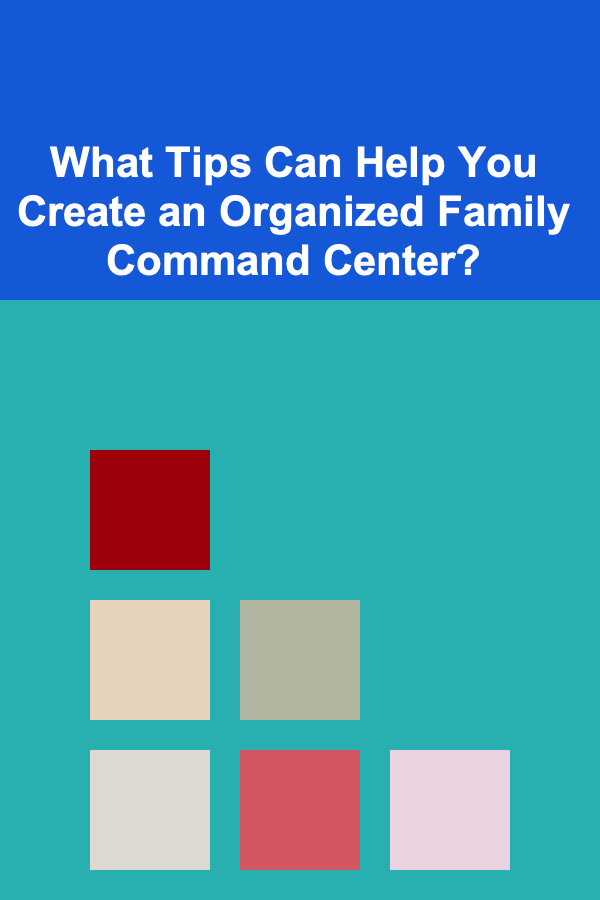
How to Make DIY Children's Toys and Games on a Budget
ebook include PDF & Audio bundle (Micro Guide)
$12.99$6.99
Limited Time Offer! Order within the next:

Creating toys and games for children on a budget doesn't have to be difficult or expensive. In fact, making your own can be a rewarding, creative process that allows you to tailor the items to your child's interests and developmental needs. Not only will you save money, but you'll also have the opportunity to engage in meaningful activities that can boost your child's imagination, learning, and playtime experience. This actionable guide will walk you through the steps of crafting affordable and fun DIY toys and games for children, using everyday materials that you might already have at home.
Why DIY Toys and Games?
Before diving into the how-to process, let's consider why making toys and games yourself is a great idea:
- Cost-effective: Store-bought toys and games can quickly add up. Making your own can be a fraction of the price, especially if you use recycled materials.
- Customizable: DIY toys allow you to design and adapt the play experience to your child's preferences, developmental stage, and interests.
- Learning opportunity: Creating toys together can be a great bonding activity and offers an educational experience in crafting, problem-solving, and imagination.
- Environmental impact: Using recycled and upcycled materials reduces waste and minimizes your environmental footprint.
Materials You Can Repurpose
Before starting any DIY project, it's helpful to know what materials you can easily find around the house that can be repurposed into toys and games:
- Cardboard: Old boxes, cereal boxes, and packaging can be cut, folded, and decorated to create structures, puzzles, and games.
- Wooden craft sticks: These are great for making everything from puppets to building blocks.
- Fabric scraps: Use leftover fabric from old clothes to create plush toys or soft play items.
- Bottle caps, buttons, and plastic containers: These small objects can be transformed into game pieces, puzzles, or even jewelry.
- Old newspapers and magazines: Perfect for crafting collages, paper mâché, and homemade puzzles.
- Egg cartons, toilet paper rolls, and other recyclables: These items can form the basis of many different kinds of toys.
Once you've gathered your materials, it's time to get creative. Below are some fun, simple, and affordable DIY toy and game ideas.
DIY Children's Toys and Games Ideas
1. Cardboard Puzzles
Cardboard puzzles are an excellent way to engage your child in problem-solving while keeping costs low. You can design puzzles based on their favorite characters or themes.
How to Make It:
- Materials: Cardboard, scissors, glue, and markers or paint.
- Steps :
- Draw a picture or design on a piece of cardboard. This could be a simple scene or something more intricate based on your child's interests.
- Once the drawing is complete, cut the cardboard into large puzzle pieces (around 4-6 pieces for younger children, or more for older kids).
- If desired, laminate the puzzle pieces with clear tape to make them more durable.
- Store the puzzle pieces in a small box, and let your child put it together.
This puzzle activity promotes cognitive development and fine motor skills.
2. DIY Bowling Set
A homemade bowling set is a fun activity that can be done indoors or outside, and it's an easy project to make with recyclables.
How to Make It:
- Materials: Empty plastic bottles (e.g., water or soda bottles), a small ball (preferably a soft one), and markers or paint for decoration.
- Steps :
- Collect 6-10 plastic bottles. Wash and dry them thoroughly.
- Decorate the bottles with markers or paint to give them a fun and colorful look.
- Fill the bottles with a small amount of sand or rice to weigh them down, ensuring they stand upright when knocked over.
- Set up the bottles in a triangular formation (similar to bowling pins) and use a soft ball to knock them down.
This game helps children develop hand-eye coordination and motor skills.
3. Sensory Bags
Sensory bags are ideal for younger children. They help develop tactile senses and are an excellent calming activity.
How to Make It:
- Materials: Zippered plastic bags, hair gel or clear liquid soap, small items to fill (buttons, beads, rice, pasta, fabric scraps), tape.
- Steps :
- Fill a plastic bag with hair gel or liquid soap until it's about half full. You can also add glitter or small beads for added fun.
- Add small items like buttons, rice, or pasta into the bag, ensuring that there's enough room for the contents to move around.
- Seal the bag tightly and reinforce the edges with tape to prevent leaks.
- Allow your child to squish, push, and explore the different textures.
Sensory bags are soothing and can help improve fine motor skills while engaging children in a tactile experience.
4. Tin Can Telephone
This classic DIY toy provides a fun way to engage your child in communication activities. It also introduces concepts like sound travel.
How to Make It:
- Materials: Two empty tin cans or plastic cups, string, and a nail or sharp object.
- Steps :
- Use a nail or sharp object to make a hole in the bottom of each can or cup.
- Cut a length of string (about 10-15 feet), and thread it through the holes. Tie knots at both ends of the string to keep it secure.
- Have your child hold one can or cup, while you hold the other. Take turns talking into the cans to hear how the sound travels through the string.
This activity encourages communication skills and teaches about sound, physics, and teamwork.
5. DIY Building Blocks
Building blocks are a great way to encourage imaginative play and enhance motor skills. You can make your own wooden blocks using scrap wood or craft sticks.
How to Make It:
- Materials: Craft sticks (or small blocks of wood), glue, non-toxic paint.
- Steps :
- Stack several craft sticks on top of each other and glue them together to form a rectangular shape.
- Repeat the process until you have a collection of blocks in various sizes.
- Paint the blocks with non-toxic paint in different colors for added appeal.
- Let the blocks dry completely before giving them to your child.
Building blocks help with hand-eye coordination, spatial awareness, and creativity as children build different structures and shapes.
6. Homemade Memory Game
Memory games are great for cognitive development, focusing on recall and concentration. You can easily make a memory matching game with cardboard or cardstock.
How to Make It:
- Materials: Cardboard or cardstock, scissors, markers or stickers.
- Steps :
- Cut the cardboard or cardstock into equal-sized squares (about 2 inches by 2 inches).
- Draw or stick identical images or patterns on two separate cards for each match.
- Shuffle the cards and lay them face down in a grid.
- Take turns with your child flipping over two cards at a time to find matches.
This game is excellent for developing memory skills and improving concentration.
7. Sock Puppets
Sock puppets are a fun and easy craft project that can lead to hours of creative play and storytelling.
How to Make It:
- Materials: Old socks, buttons, fabric scraps, yarn, glue, and markers.
- Steps :
- Find a sock that is clean and free of holes.
- Glue or sew on buttons for eyes and use yarn for hair or a mouth.
- Use fabric scraps or markers to add accessories, such as a nose or clothes.
- Once your puppet is ready, encourage your child to put on a puppet show or use it in creative play.
Sock puppets inspire imaginative storytelling and social play.
Final Thoughts
DIY children's toys and games are not only budget-friendly but also provide a unique opportunity for creativity and hands-on learning. By using materials you already have at home, you can create an endless variety of toys that will engage your child's mind, enhance their fine motor skills, and foster their imagination. Additionally, these projects provide valuable bonding time as you work together to bring these creations to life.
So, gather your materials, unleash your creativity, and let the fun begin!
Reading More From Our Other Websites
- [Home Space Saving 101] How to Design a Multifunctional Living Room in a Compact Space
- [Organization Tip 101] How to Keep Your Entryway Free from Clutter
- [Home Space Saving 101] How to Make the Most of Your Bathroom with Vertical Storage
- [Horseback Riding Tip 101] Saddle‑Ready Style: The Top Must‑Have Pieces for Modern Equestrians
- [Organization Tip 101] What Are the Best Practices for Maintaining Home Organization?
- [Home Soundproofing 101] How to Improve Acoustic Privacy in Shared Living Spaces
- [Organization Tip 101] How to Prepare Your Wardrobe for Seasonal Changes
- [Home Security 101] How to Handle Security Risks in an Urban Environment
- [Home Storage Solution 101] How to Optimize Home Office Organization: Create a Productive Workspace
- [Organization Tip 101] How to Incorporate Movement with Organized Exercise Equipment

How to Invest While Living a Nomadic Lifestyle
Read More
Mastering HR Business Partnership: A Strategic Approach to Workforce Management
Read More
What Tips Can Help You Create an Organized Family Command Center?
Read More
How To Taste Orange Wines: Skin-Contact Whites
Read More
How to Get Started with 3D Printing at Home
Read More
Identifying Carbonation in Sparkling Wines: A Comprehensive Guide
Read MoreOther Products

How to Invest While Living a Nomadic Lifestyle
Read More
Mastering HR Business Partnership: A Strategic Approach to Workforce Management
Read More
What Tips Can Help You Create an Organized Family Command Center?
Read More
How To Taste Orange Wines: Skin-Contact Whites
Read More
How to Get Started with 3D Printing at Home
Read More